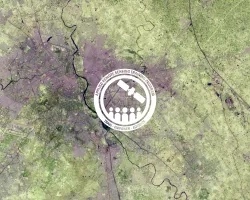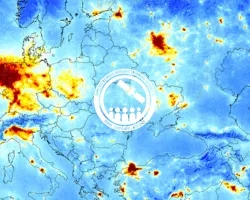Description
For years, mapping of crop types and assessment of their characteristics has been carried out to monitor food security, inform optimal use of the landscape, and contribute to agricultural policy. High-quality crop mapping has become a requirement for most nations given its importance in national and international economics, trade, and food security, and is a major topic of interest in the domains of policy, economics, and land management. Most countries or economic regions currently and increasingly use freely available satellite imagery for crop type classification and biophysical variable assessment as they provide a synoptic view, multi-temporal coverage, and are cost-effective. Remote sensing methods based on optical and/or microwave sensors have become an important means of extracting crop information as they explain vegetation structure and biochemical properties.
This five-part, intermediate webinar series will focus on the use of synthetic aperture radar (SAR) from Sentinel-1 and/or optical imagery from Sentinel-2 to map crop types and assess their biophysical characteristics. The webinar will cover a SAR and optical refresher along with pre-processing and analysis of Sentinel-1 and Sentinel-2 data using the Sentinel Application Platform (SNAP) and Python code written in JupyterLab, a web-based interactive development environment for scientific computing and machine learning. The webinar will also cover an operational roadmap for mapping crop type, including best practices for collecting field data to train and validate models for classifying crops on a national level. The final session of this series will cover crop biophysical variable retrievals using optical data.
This training series is a collaboration between NASA’s Applied Remote Sensing Training Program (ARSET), Agriculture and Agri-Food Canada (AAFC), European Space Agency (ESA), Indian Space Research Organisation (ISRO), United Nations Office for Outer Space Affairs (UNOOSA), and the CEOS Working Group on Capacity Building & Data Democracy (WGCapD).
By the end of this training attendees will be able to identify:
- The information content in passive (optical) and active (microwave) remote sensing data and how it relates to agricultural parameters
- The characteristics of passive and/or active sensors used in operational crop mapping and biophysical retrievals
- Where to acquire satellite data for conducting agricultural analysis
- The steps for pre-processing optical and radar imagery
- The steps to classify crop types using supervised and unsupervised techniques and explain the difference among classifiers (e.g., Decision Tree and Random Forest)
- Best practices for collecting field-based training data
- Retrieval of crop biophysical variables
This training series is intended for local, regional, federal, and non-governmental organizations from agriculture and food security related agencies to use radar and optical remote sensing applications in the domain of agriculture for crop type mapping.
- Five, 2.5 hour sessions
Instructors: Heather McNairn & Laura Dingle-Robertson (AAFC)
- SAR theory (phase, incidence angle, geometry, polarization, etc.)
- Optimal sensor parameters for agricultural applications
- Soil and crop characteristics on SAR response
- Q&A
Materials:
Instructors: Magdalena Fitrzyk & Fabrizio Ramoino (Serco c/o ESA)
- Basic physics, concepts and theory of optical remote sensing, and its applications for agriculture
- Optical imagery pre-processing using SNAP
- Q&A
Materials:
If you would like to follow along with the demonstrations in Part 2, please:
- Download and install SNAP: http://step.esa.int/main/
download/snap-download/ - Register for the Copernicus Open Access Hub: https://scihub.copernicus.eu/
- Download the data we will be using in the demonstration: Data Download Instructions
Instructors: Heather McNairn & Laura Dingle-Robertson (AAFC)
- Roadmap for producing an Annual Crop Inventory
- Selection of radar + optical data for crop mapping
- Overview of how Agriculture and Agri-Food Canada (AAFC) collects training data
- SAR imagery pre-processing using SNAP
- Q&A
Materials:
If you would like to follow along with the demonstrations in Part 3, please:
Instructors: Georgia Karadimou & Tereza Roth (RUS)
- Explanation of Random Forest, Support Vector Machine, and Unsupervised algorithms as classifiers
- Explain Python libraries for running classifiers in JupyterLab
- Use of SNAP and Python for crop classification, including demonstration of different parameters (e.g., S1 vs. S2 alone) when classifying crop types in a given study area
- Q&A
Materials:
Instructors: Sophie Bontemps & Pierre Defourny (Catholic University of Louvain)
- Biophysical Variables (LAI, FAPAR, FVC, Cab and CWC) derived from Sentinel-2
- Radiometric Indices: Quantitative measures of features that are obtained by combining several spectral bands
- Q&A
Materials:






